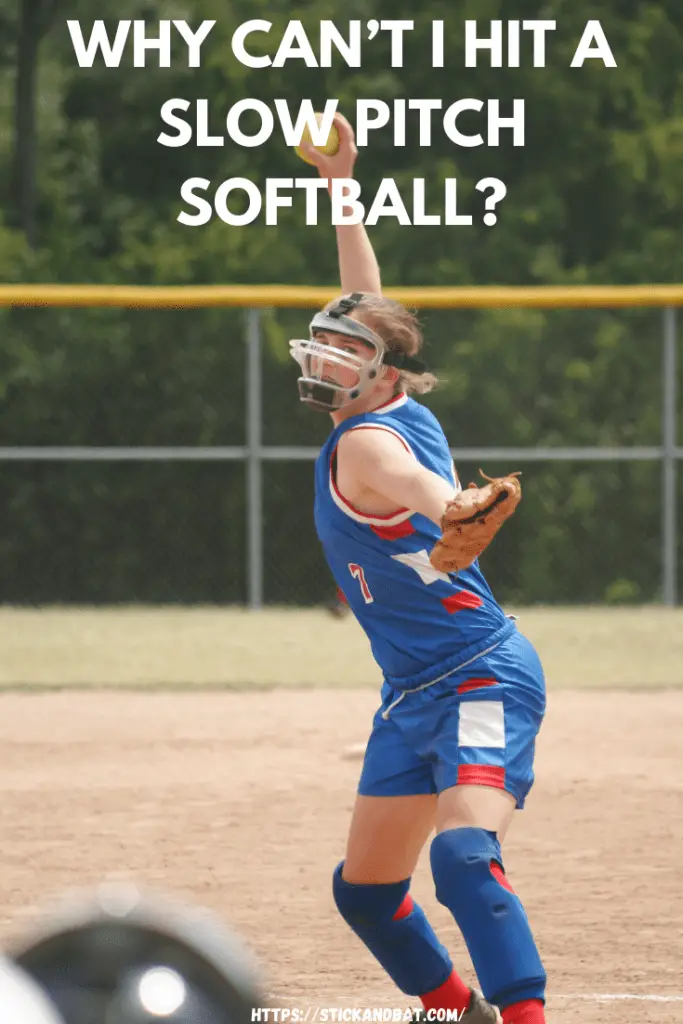Without practice, you can’t expect to make good hits in slow pitch softball. If you have not played softball before, practice is the only way to start hitting pitches. Fortunately, there are tips and tricks that can improve your hitting skills during practice.
The best way to practice hitting slow pitch softball is at the batting cages. You can perfect your swing and find what works for you. You can also bring a friend who has played softball before to give you advice and help you learn the basics.
This article explains how to hit a slow pitch softball if you are new to the game or have never played before.
8 Tips To Hit a Slow Pitch Softball
1) Choose the right bat
One common reason players can’t hit a slow pitch softball is because they are using the wrong bat. First, you should make sure your bat is legal in your league.
Next, find a bat that is not too heavy or long. You want to have good control over the bat and feel comfortable using it. The size of the bat will not affect how far you hit the ball as much as making square contact with the ball and how fast you swing the bat.
2) Work on your grip
Once you have found the right bat, it is time to work on your grip. For right handers, you should put your right hand above your left. For left handers, you should put your left hand above your right.
Your grip should be close to the handle, but not too low that you feel you don’t have control over the bat. “Choking up” on the bat, or raising your grip, can help you get more control over the bat. Practice adjusting your grip so that you have the maximum control over your swing.
3) Practice your swing
Before you try hitting slow pitches, take a few practice swings. This will help you get warmed up and allow you to try out your swing with no pressure of hitting.
When practice swinging, remember to swing all the way through and use the same technique you would if you were up to bat.
4) Start with a strong, confident stance
Your stance refers to how you stand when you are up to bat. Your stance should feel comfortable, and you should feel confident and strong.
When you go up to bat, stand parallel to home plate about 6 to 12 inches away and face the pitcher. Keep your feet shoulder-width apart with your back foot planted and remain balanced with your knees slightly bent. Try not to lean forward or backward.
5) Wait for the right pitch
The right pitch will go through your strike zone, which is over home plate between your chest and mid-thigh.
While you can hit a ball outside of your strike zone, you will likely have to extend your swing. Extending your swing causes you to lose control of the bat, and it also takes power away from your swing.
You should be ready to swing at every pitch. If you determine it is not the right pitch, you can always pull back.

6) Keep your eye on the ball
In slow pitch softball, the ball will rise and fall in an arch. You must keep your eye on the ball from the moment the pitcher releases it to the moment it hits your bat or the catcher’s glove.
When the pitcher first releases the ball, you must estimate if it will be inside the strike zone. You want to quickly determine whether or not you will swing at the pitch.
7) Swing fast
If you decide to swing at the pitch, you want to focus on accuracy and bat speed. Swing at the ball fast while keeping the bat level or at a slight uppercut. A good way to increase your bat speed is to try to swing “through” the ball rather than “at” it.
To make good contact with the ball, you want to hit it squarely in the middle. You also want to use the thickest part of the barrel to hit the ball.
Timing is also important to hit slow pitch softball. In slow pitch, the ball comes in at an arch, so you have more time to adjust your swing so that the bat hits the ball compared to fast pitch.
8) Practice and Practice
Batting cages are a great way to practice hitting. Most batting cages have different speeds to choose from, and each pitch is delivered in the strike zone.
When hitting in a batting cage, try to focus on making good contact. If you are frequently popping up (hitting the ball high), you are probably hitting the bottom part of the ball. Conversely, if you are hitting ground balls, you are probably hitting the top part of the ball.
If you are hitting foul balls, you are probably swinging either too early or too late.
When first starting slow pitch softball, focus on accuracy and control rather than making power hits. Once you find you can make solid contact with the ball consistently, you can focus on increasing bat speed.
Another practice tip is to start with the slowest pitch, then once you get more comfortable, practice with faster pitches. Check out this step-by-step guide to hitting slow pitch softball.
If you are new to softball, don’t get frustrated that you can’t hit slow pitches. It is a skill that you must practice in order to get better. If you find yourself struggling to hit the ball, first try out different bats. A too heavy or too light bat will be harder to control, which may be the reason you are not making contact with the ball.
Next, focus on your grip on the bat and your swing technique. Practice at the batting cages to find what works for you or have a friend or coach give you some pointers. You can also record yourself swinging to see for yourself what you need to change.
Start by practising with the slowest possible speed at the batting cage until you can make consistent contact with the ball. Then focus on bat speed to make power hits. Once you are comfortable with that speed, practice on the next highest speed. This will help you gain skill and confidence.



